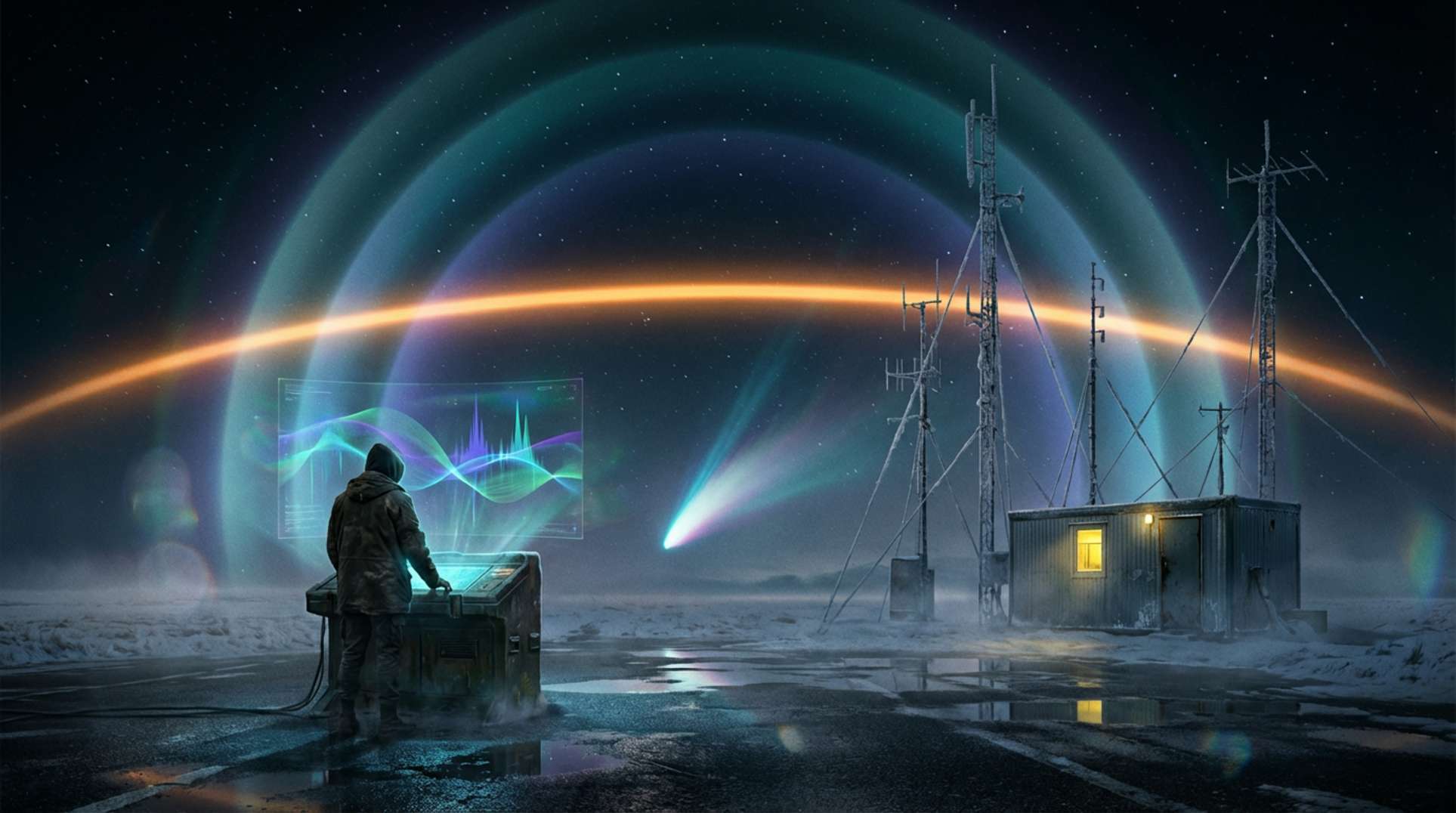Spooky season is nearly upon us, and what better way to set the mood than by diving into the intriguing world of extraterrestrial communication? The history of radio astronomy, particularly in the search for extraterrestrial intelligence (SETI), is filled with fascinating discoveries and puzzling signals. From the original concept of searching for narrowband signals at the 1420 MHz hydrogen line to the enigmatic signals that have baffled scientists for decades, the quest for alien contact continues to captivate our imagination.
Key Takeaways
- The concept of an alien beacon raises questions about energy requirements and technological capabilities.
- Directional signaling may explain the silence of the galaxy.
- The SHGb02+14a signal presents a compelling case for further investigation.
The Concept of Alien Beacons
The idea of an alien beacon is both thrilling and daunting. Cocconi and Morrison proposed that civilizations might send out powerful signals to announce their presence. However, such a beacon would require enormous amounts of energy. A narrowband signal is more efficient than a broadband one, but even then, the energy needed would far exceed Earth’s current production.
To effectively communicate with the entire Milky Way, a civilization would need to maintain this beacon for millions of years. This raises the question: why would an advanced civilization invest so much time and resources into a project that could easily be a trap?
The Directional Dilemma
If a civilization were to send a signal, it might be more practical to direct it toward known planets with life. This would conserve energy and increase the chances of a response. However, this leads to another conundrum: if signaling is directional, how do civilizations detect each other?
The answer may lie in leakage. Accidental detection of signals could lead to intentional communication. Yet, if aliens are aware of Earth’s biosignatures, how long would they keep a signal active without a response? Would they wait a billion years before trying again?
The Forgotten Signal: SHGb02+14a
Among the many signals detected, one stands out: SHGb02+14a. Discovered in March 2003 by the SETI@home project, this signal was observed three times, each time at the hydrogen line frequency of 1420 MHz. Unlike the famous Wow signal, SHGb02+14a has not received much attention, primarily due to its uncatchy name.
Characteristics of SHGb02+14a
- Location: Between the constellations Pisces and Aries, with no nearby stars within 1000 light-years.
- Weakness: The signal was barely detectable, which paradoxically contributed to its dismissal.
- Rapid Drift: The signal exhibited a rapid drift of 8 to 37 Hz per second, suggesting either intentional modulation or a high rotation rate of its source.
The Implications of a Directional Signal
The rapid drift of SHGb02+14a raises intriguing possibilities. If it were a signal from a rotating planet, it would imply an extraordinary rotation rate. However, it could also indicate a spacecraft or space station transmitting intentionally. The fact that it appeared consistently at 1420 MHz before drifting suggests a deliberate communication method.
Despite its peculiarities, SHGb02+14a was deemed a poor candidate for SETI due to its weirdness. Critics argued it could be an artifact of random chance or cosmic noise. However, these explanations could dismiss any potential SETI signal, making it essential to revisit the data.
The Search Continues
As the Wow signal loses its status as the premier SETI candidate, SHGb02+14a deserves renewed attention. The absence of nearby stars in its region does not rule out the possibility of a distant source. In fact, a binary red dwarf star system, G73-11 A and B, is located just over 100 light-years away, providing a potential origin for the signal.
Conclusion
The quest for extraterrestrial communication is far from over. As we continue to explore the vastness of space, we must remain vigilant for signals that may have been overlooked. The universe is full of mysteries, and perhaps the next breakthrough in SETI will come from revisiting old data with fresh eyes.
Thanks for joining this exploration into the weird and wonderful aspects of our universe. Stay curious!




